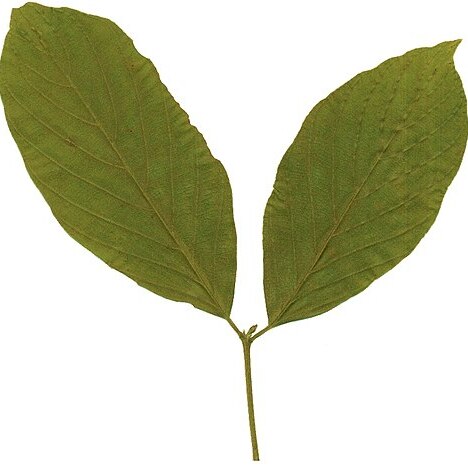Leaf-lamina 5–19 × 2·3–8 cm., elliptic to ovate, apex acute to acuminate, margin crenate-serrulate, base rounded to subcordate, asymmetric, penninerved with 8–10 pairs of secondary nerves and tertiary nerves often subparallel, sparingly pubescent when young, becoming glabrous except for the midrib below; petiole up to 5 mm. long, sparingly pubescent; stipules up to 11 mm. long, subulate, glabrescent.
Inflorescence of corymbose pedunculate cymes; peduncles pubescent, 2–6 cm. long; pedicels pubescent, 7 mm. long.
Shrub or small tree up to 5(10) m. tall; bark grey with raised lenticels; branchlets hairy when young.
A small tree, up to about 30 ft. high, with spreading crown
Flowers small, white in golden-brown hairy cymose panicles
Ovary with style 2 mm. long, style-branches 0·5 mm. long.
Calyx-teeth deltate, 3 mm. long, pubescent without.
Petals 2 mm. long, obovate to ovate, unguiculate.
Capsule 10–14 mm. in diam., globose, 3-seeded.
Stamens with filaments up to 2 mm. long.
Disk up to 3·5 mm. in diam., glabrous.

